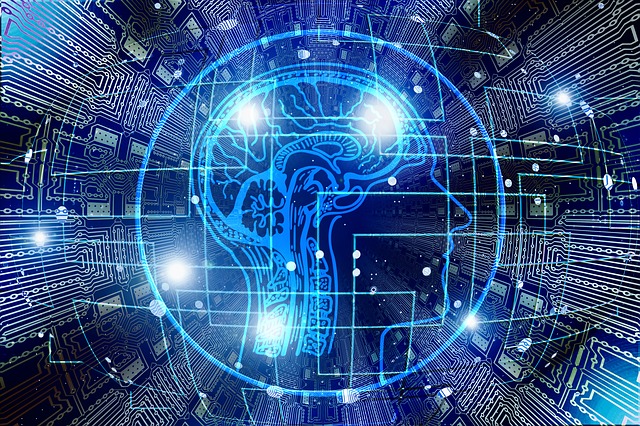The rise of Artificial Intelligence (AI) is here to save the day — or your data, at least. In the world of data analytics, human error can cause some serious problems. One misplaced decimal point or forgotten digit can ruin an entire data set, leading to incorrect findings and costly mistakes.
But with AI, we can limit human error and improve data analysis accuracy. Explore how AI is fixing human error in data analytics and revolutionizing how we approach this critical field.
1. Data entry
Manual data entry is riddled with inaccuracies. You could accidentally hit the wrong key or misread the data you’re trying to enter, which can seriously impact the accuracy of the data.
However, machine learning algorithms are changing that by detecting errors in your data sets that humans might miss.
For example, AI can flag missing values, typos and formatting errors. This means you don’t have to spend hours combing through your data to look for mistakes — AI can do it for you!
But that’s not all. AI can also learn from your data and improve over time. As you enter more data, AI will better detect errors and suggest corrections. It’s like having a super-powered proofreader that never gets tired or makes mistakes.
Data entry can be tedious and time-consuming, but with AI, you can automate the process and focus on more important things — like analyzing your data and making informed decisions.
2. Sampling
Humans can make mistakes in selecting samples when manually choosing data for analysis. That’s because humans can be biased in their selections. Additionally, humans may be unable to process large amounts of data promptly, which can lead to errors in the selection process.
Fortunately, AI is automating the process of data selection. AI algorithms can quickly and accurately identify the most relevant data points and process large amounts of data in a fraction of the time it would take a human.
AI is also helping to democratize data across the enterprise. Automating the selection process with AI makes it easier for human employees to use that data and make decisions based on the information.
3. Analysis
Human error occurs in data analysis for various reasons. Sometimes, people misinterpret data or make assumptions based on incomplete information. These errors are especially true when analyzing unstructured data because it doesn’t always come in organized columns and rows. It can come in video, PDFs and more — and the International Data Corporation (IDC) predicts 80% of global data will be unstructured by 2025.
More inaccuracies going unchecked can lead to the wrong conclusions and flawed decision-making. However, machine learning algorithms analyze data sets incredibly quickly. They can detect patterns and make predictions based on millions of data points. You’ll get more accurate insights and recommendations that humans cannot do alone.
4. Data interpretation
Humans are also prone to bias and subjectivity when interpreting data. Even if the analysis is correct, you can still jump to conclusions. However, AI prevents these human errors by analyzing data without bias.
For example, let’s say you’re analyzing customer feedback data. You might be tempted to focus on the comments confirming your biases about a product or service. On the other hand, AI can analyze all the data and help you discover new insights that would have remained hidden without it.
Additionally, AI can help you avoid mistakes in data interpretation by providing data visualizations that are easy to understand. Since humans are visual creatures, we find it easier to understand complex information when presented in a graphic format. Thanks to AI, algorithms can create data visualizations that are clear and intuitive, helping us to interpret data more accurately.
5. Overfitting
People can make mistakes with overfitting if they use too many parameters to train a model. This leads to the model being overly complex and not generalizing well to unseen data. Overfitting also occurs when you use fewer parameters, and the model cannot capture the complexity of data.
However, AI uses regularization techniques, such as dropout and weight decay, to reduce the complexity of a model and prevent overfitting. Additionally, it uses cross-validation and optimization to find the optimal set of parameters for a given model. Using these methods allows AI to reduce the chances of overfitting and improves the model’s accuracy.
The future of AI in data analytics
The future of AI in data analytics looks incredibly promising. More companies are already using AI to label imagery and sort through large amounts of data, helping humans see the signal in the noise. Gartner says 75% of enterprises will operationalize AI by the end of 2024, driving a five times increase in the streaming data and analytics infrastructure.
Humans will look to AI to supercharge intelligence analysis to identify patterns, trends and insights they would otherwise have missed. Data analytics will also be easier and faster as it continues to automate data management processes.
Overall, the future looks bright with AI in data analytics and making analysis more efficient and accurate as technology continues evolving.
AI is playing an important role in data analytics
AI’s impact in fixing human error in data analytics is undeniable. It can eliminate and prevent all kinds of mistakes you make when working with data, and it can do it much faster than anyone could ever hope to accomplish.
In conclusion, AI will continue to play an important role as we move into a new era where data analytics is more important than ever.
About the Author

April Miller is a senior IT and cybersecurity writer for ReHack Magazine who specializes in AI, big data, and machine learning while writing on topics across the technology realm. You can find her work on ReHack.com and by following ReHack’s Twitter page.
Sign up for the free insideAI News newsletter.
Join us on Twitter: https://twitter.com/InsideBigData1
Join us on LinkedIn: https://www.linkedin.com/company/insidebigdata/
Join us on Facebook: https://www.facebook.com/insideAI NewsNOW




